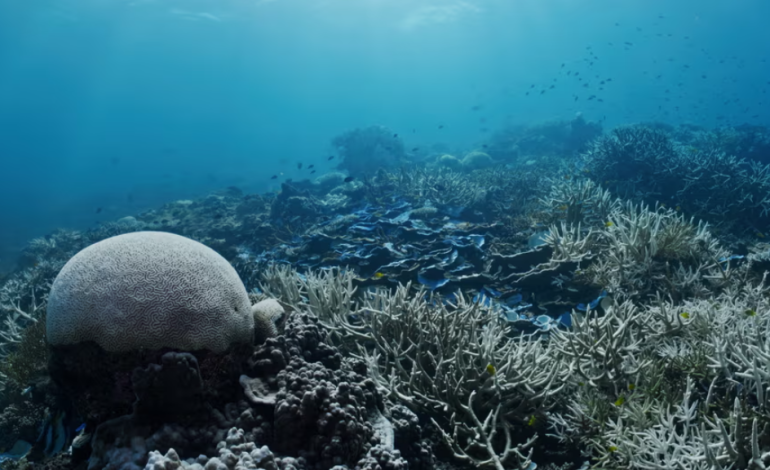Global Coral Reefs Face Unprecedented Bleaching as Ocean Temperatures Break Records

A record-breaking marine heatwave has triggered the most widespread coral bleaching event in recorded history, with an estimated 84% of the world’s coral reef areas affected, according to the International Coral Reef Initiative (ICRI).
The ongoing bleaching, first observed in early 2023, has now surpassed all previous global events in both scale and severity.
This marks the fourth major global bleaching event since 1998, and it has outpaced the 2014–2017 episode that impacted roughly two-thirds of reefs worldwide. The ICRI, a coalition of over 100 governments, research institutions, and environmental organizations, warns that the situation remains unresolved and that the full ecological consequences are still unfolding.
Bleaching occurs when prolonged exposure to elevated ocean temperatures causes coral to expel the symbiotic algae living in their tissues. These algae are crucial for coral survival, providing both color and nutrients. Once expelled, corals are left stark white and vulnerable to disease and death.
The phenomenon has now affected reefs across at least 82 countries and territories, including areas previously considered refuges from ocean heat stress, such as the Gulf of Eilat and Raja Ampat. In some regions, corals have bleached in back-to-back years, challenging even the most resilient ecosystems.
“The extent of this event has brought us into uncharted territory,” said Dr. Derek Manzello, director of NOAA’s Coral Reef Watch. “There appears to be no safe harbor left from the effects of ocean warming.”
Ocean temperatures have surged to unprecedented levels, with 2024 being the hottest year on record. The average annual sea surface temperature in tropical and subtropical regions reached 20.87°C (69.57°F), surpassing previous records and contributing to an explosion in the number and intensity of marine heatwaves.
This global stressor threatens not only marine biodiversity — coral reefs support around 25% of all marine species — but also the livelihoods of over a billion people who depend on reef ecosystems for food, tourism, and coastal protection.
In response to the escalating crisis, NOAA has expanded its bleaching alert system to include new levels that reflect the increased intensity of heat stress. In areas like the Great Barrier Reef, Florida, and the Caribbean, scientists have reported large-scale coral death and dramatic shifts in reef composition.
While some conservation efforts aim to protect and rehabilitate coral populations — including breeding programs, reef restoration, and emergency relocations of vulnerable species — experts emphasize that reducing greenhouse gas emissions is the most critical factor in addressing the root cause of coral decline.
“The best way to protect coral reefs is to address climate change directly,” said Dr. Mark Eakin, executive secretary of the International Coral Reef Society. “Everything else is a temporary fix if we don’t stop the warming.”
Despite the bleak outlook, researchers and conservationists continue their work, driven by the urgency of the moment and a deep connection to the ecosystems they strive to protect. However, many express concern that without stronger global climate commitments, coral reefs may face irreversible decline.
As monitoring efforts continue and a comprehensive report from the Global Coral Reef Monitoring Network is expected next year, scientists caution that the full scale of reef loss may not be fully understood for years.
In the words of marine biologist Melanie McField:
“Bleaching is always eerie — as if a silent snowfall has descended on the reef. Where once there was color and motion, now there is stillness and loss.”
With input from the Associated Press, Reuters, and the Guardian.









The latest news in your social feeds
Subscribe to our social media platforms to stay tuned